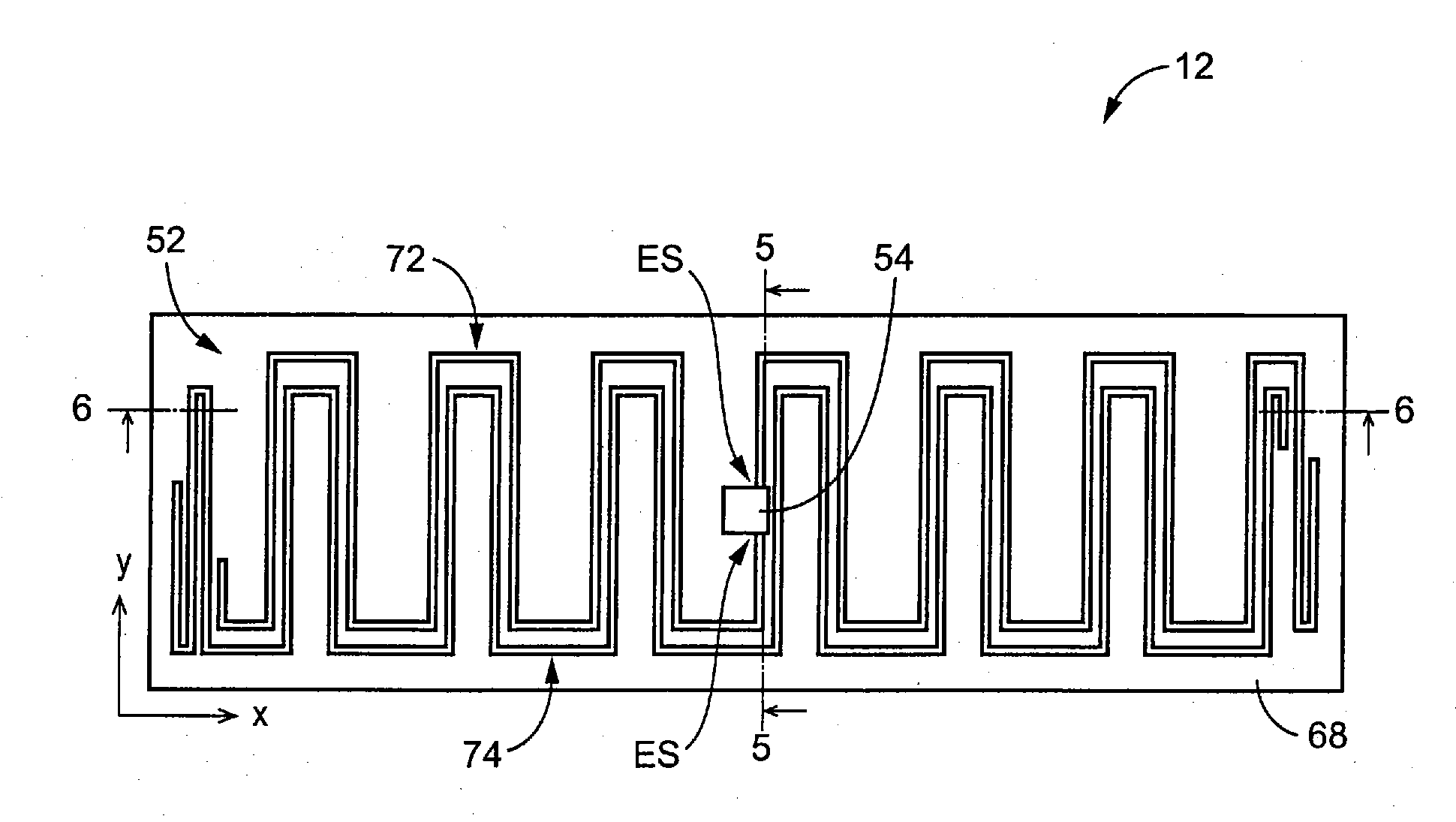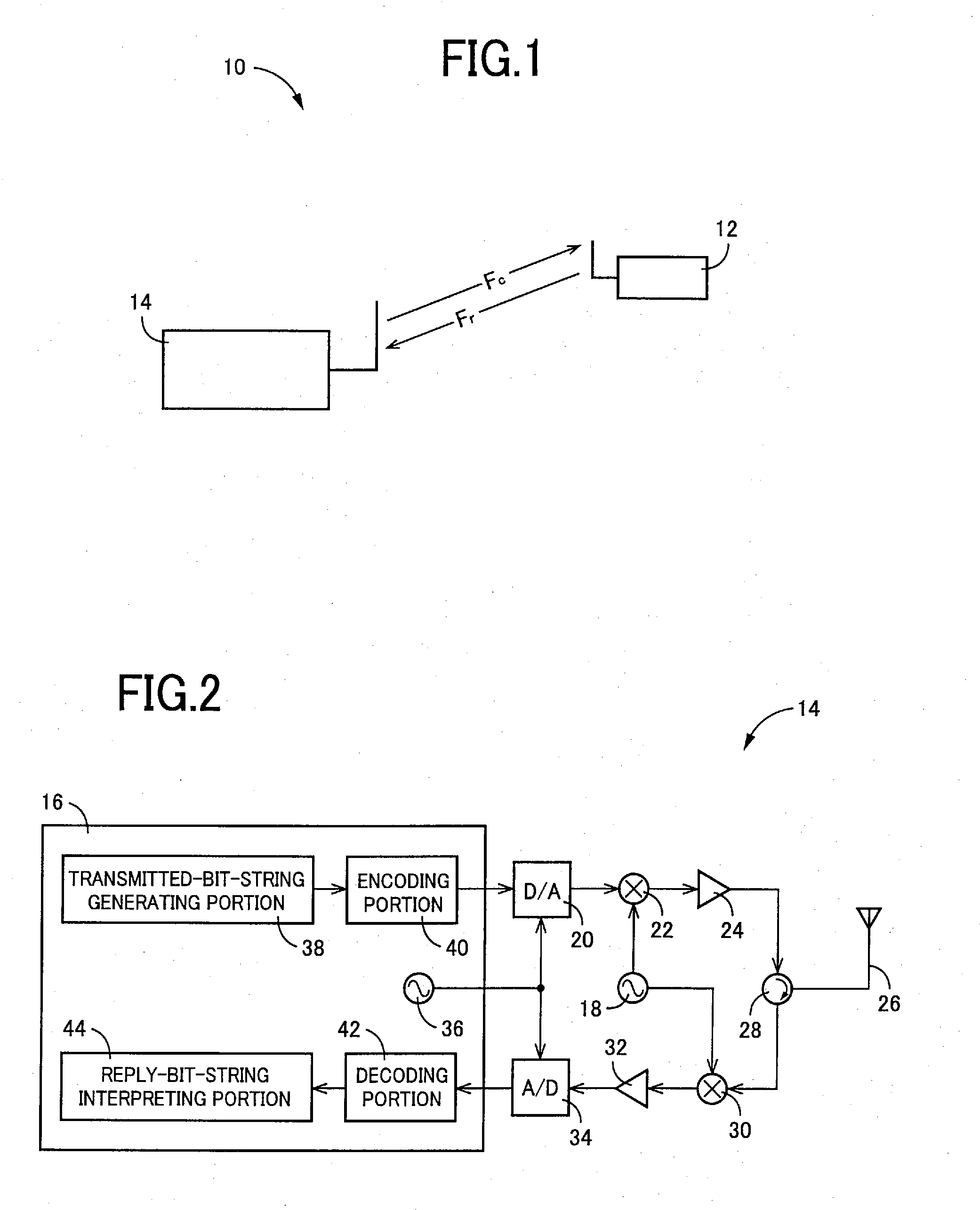Antenna, And Radio-Frequency Identification Tag
a radio-frequency identification and antenna technology, applied in the direction of antennas, antenna details, electrical appliances, etc., can solve the problems of reducing the size of the radio-frequency identification tag, increasing the degree, and increasing the risk of deterioration of the antenna characteristics such as sensitivity value and communication distance, so as to reduce the risk of deterioration of communication characteristics, increase and increase the effect of the total length of the meander line portion
- Summary
- Abstract
- Description
- Claims
- Application Information
AI Technical Summary
Benefits of technology
Problems solved by technology
Method used
Image
Examples
first embodiment
[0078]The other preferred embodiments of the present invention will be described in detail by reference to FIGS. 26-30. In the following description, the same reference signs as used in the first embodiment will be used to identify the functionally corresponding elements.
[0079]Referring to the plan view of FIG. 26, there is illustrated an antenna 100 constructed according to a second embodiment of this invention. In this antenna 100, the driven and parasitic meander line portions 72, 74 have respective extensions 72e′, 74e′ the lengths of which are larger than those of the extensions 72e, 74e in the antenna 52. Further, the meander line portions 72, 74 in the antenna 100 have respective cutout parts having the same length as the extensions 72e′, 74e′, which cutout parts are provided the longitudinal ends opposite to the longitudinal ends at which the extensions 72e′, 74e′ are formed. FIG. 27 illustrates an antenna 102 according to a third embodiment of the invention that has extensi...
fourth embodiment
[0080]Referring next to the plan view of FIG. 28 and the cross sectional view of FIG. 29 taken along line 29-29 of FIG. 28, there is illustrated a radio-frequency identification tag 104 constructed according to this invention. As shown in these figures, the radio-frequency tag identification 104 includes an antenna 106 wherein the driven and parasitic meander line portions 72, 74 have the respective extensions 72e″, 74e″ shown in FIG. 27, which are formed on the respective opposite surfaces of a film member of an electrically insulating material in the form of the substrate 68. The parasitic meander line portion 74 is positioned on the back surface of the substrate 68, relative to the driven meander line portion 72 formed on the front surface of the substrate 68, so as to influence of the input impedance of the driven meander line portion 72.
fifth embodiment
[0081]In the plan view of FIG. 30, there is illustrated a radio-frequency identification tag 108 constructed according to the invention. As shown in FIG. 30, the radio-frequency identification tag 108 includes an antenna 110 wherein the driven and parasitic meander line portions 72, 74 having the respective extensions 72e′, 74e′ shown in FIG. 26 include respective large-width parts 72b, 74b in respective longitudinal parts of the meander line portions 72, 74 in which the electric current density is higher than in the other longitudinal parts during communication through the antenna 110 with the radio-frequency identification tag communication device 14. In the large-width parts 72b, 74b, the width dimensions of the longitudinal and transverse conductive sections of the meander line portions 72, 74 are larger than in the other longitudinal parts. The provision of the large-width parts 72b, 74b of the meander line portions 72, 74 in the above-indicated longitudinal parts permits radio...
PUM
 Login to View More
Login to View More Abstract
Description
Claims
Application Information
 Login to View More
Login to View More - R&D
- Intellectual Property
- Life Sciences
- Materials
- Tech Scout
- Unparalleled Data Quality
- Higher Quality Content
- 60% Fewer Hallucinations
Browse by: Latest US Patents, China's latest patents, Technical Efficacy Thesaurus, Application Domain, Technology Topic, Popular Technical Reports.
© 2025 PatSnap. All rights reserved.Legal|Privacy policy|Modern Slavery Act Transparency Statement|Sitemap|About US| Contact US: help@patsnap.com



